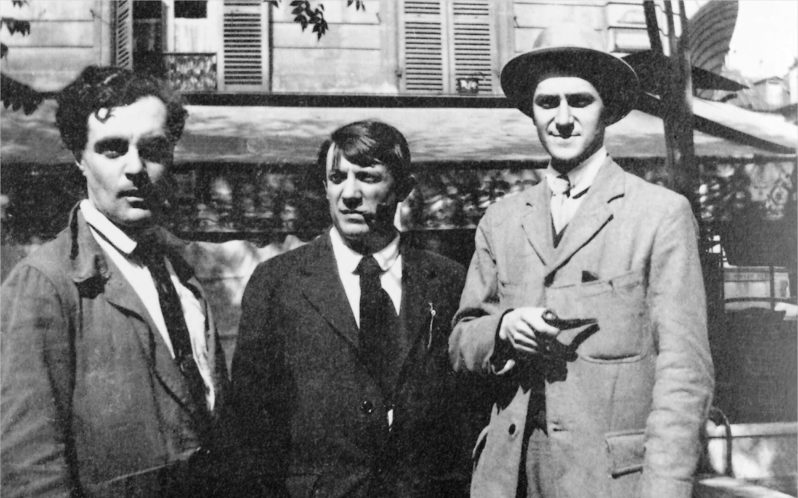Paris. Montmartre and Montparnasse

Amedeo Modigliani moved to Paris in 1906, where he lived until his death in 1920, except for two short stays in Livorno and one in the south of France. The key districts frequented were Montmartre and Montparnasse, both pulsating centers of the cultural avant-garde of that time.
Paris is very important for his artistic training, here he finds new impulses that will lead him to his unmistakable personal style, made of very different influences that the artist has always been able to make his own and reinterpret according to his soul.
In Paris Modigliani met young intellectuals who, in various artistic fields, were creating significant cultural innovations and new movements. Among these are Pablo Picasso, Constantin Brâncuși, Diego Rivera, Maurice Utrillo and Chaïm Sautine, all artists with whom Modlgiani found an opportunity for confrontation, from whom he received motivations or with whom he had friendships.
This group of young intellectuals met in cafes or cabaret, such as the Lapin Agile in Montmartre or La Rotonde in Montparnasse, or in the studio of one of them, for example the Bateau Lavoir where Picasso worked, or even in structures used for the life and collective work of several artists, such as Delta or La Ruche.
During these years he participated in some exhibitions, in particular the Salons d’Automne and the Salons des Indépendents. In 1912 he exhibit only sculptures, seven female heads in stone, in the Salon d’Automne.
In Paris Modigliani met significant personalities for his life and career. He first met Paul Alexandre, a doctor and a patron who was not only his friend and an economic support when Modigliani was in difficulties, but he was also one of the first to recognize his artistic quality, becoming his first patron and collector, as evidenced by his rich collection of Modigliani’s paintings and drawings exhibited in Venice in 1993. Other notable patrons were Paul Guillaume, a gallerist and collector who was introduced to him by Max Jacob, and Leopold Zborowski, a Polish poet in exile and an art dealer, who was particularly present in the latter part of Modigliani’s life, as a friend and economic and artistic support. Thanks to him the artworks of Modigliani will be present at the exhibition “French Modern Art” in London in 1919.
Less well known but of equal importance is Jonas Netter who collected a large number of artworks by Modigliani and also of other artists of the time, such as Soutine and Utrillo.
And then women. Modigliani loved women and they loved him. The sources described him as handsome, elegant and kind, very learned and polite. But probably only two women were really important for his life: Beatrice Hastings and Jeanne Hébuterne.
Beatrice was an English writer and poet, portrayed in some Modigliani’s portraits, who had a strong temper and with whom quarrels were famous. Jeanne were very young when they met at Colarossi Academy, she was nineteen years old. She was his last and more important love, who followed him even into death. Modigliani portrayed her many times and she was a skilled and sensitive painter too.

